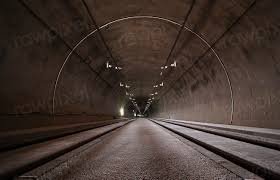Delhi is set to witness a major infrastructure milestone with the approval of a 5-km-long tunnel connecting Mahipalpur to Mandela Marg. This strategic project, aimed at easing traffic congestion near the Indira Gandhi International (IGI) Airport, was recently approved by Chief Minister Arvind Kejriwal. It is part of a broader push to modernize the city’s road network and reduce surface traffic bottlenecks.
Project Overview: A Game-Changer for Airport Connectivity
The tunnel will connect Mahipalpur (near NH-48/Aerocity) directly to Mandela Marg, offering a signal-free corridor for commuters traveling between South Delhi, Dwarka, and the airport terminals. This development comes in response to mounting congestion on Vasant Kunj roads and the Mahipalpur intersection, which serves thousands of vehicles daily.
Key features of the tunnel:
- Length: ~5 kilometers
- Design: Four-lane underground tunnel
- Structure: Box push method using RCC (reinforced concrete cement) technology
- Estimated cost: ₹850 crore
- Executing agency: Public Works Department (PWD), Delhi
- Timeline: To be completed in 3 years from project start
Benefits for Delhi Commuters
The tunnel is expected to significantly reduce:
- Travel time between Mahipalpur and Vasant Kunj by at least 20–25 minutes
- Traffic congestion at Rao Tula Ram Marg, Aruna Asaf Ali Marg, and Vasant Kunj
- Pollution levels, by cutting down on idling vehicles in peak-hour jams
Moreover, the tunnel will enhance emergency response times from the airport and improve the commuting experience for travelers and professionals heading to Aerocity or diplomatic enclaves like Chanakyapuri.
Strategic Importance and Design Innovation
This tunnel is part of Delhi’s broader “Signal-Free Corridor” master plan, focusing on:
- Seamless connectivity between major arterial roads and expressways
- Decongestion of Ring Road, Outer Ring Road, and NH-48
- Integration with Delhi Metro and IGI Airport terminals
In terms of design:
- It will feature ventilation shafts and modern lighting systems for safety
- Emergency lay-bys and fire-resistant cladding will be included
- Construction will follow strict noise and dust mitigation norms
What Residents Can Expect During Construction
During the execution phase, the PWD plans to:
- Maintain alternative traffic diversions to avoid major disruptions
- Set up environmental monitoring stations to control dust levels
- Engage with local RWAs and commercial units to minimize inconvenience
Although minor disruptions are expected, authorities have promised regular public updates and a dedicated helpline for traffic complaints.
Looking Ahead: A Step Toward Smarter Urban Transit
This 5-km tunnel is not just a connectivity upgrade—it’s part of Delhi’s vision to transform its transport backbone. With this, the city moves closer to a smarter, faster, and greener future, aligning with global benchmarks in urban mobility infrastructure.
Once operational, the corridor will become a vital conduit between Delhi’s southern sectors and the airport, further boosting the capital’s global image and internal efficiency.
Frequently Asked Questions (FAQs)
1. What is the purpose of the Mahipalpur–Mandela Marg tunnel?
The tunnel is being built to create a signal-free route between Mahipalpur and Mandela Marg, easing traffic near the IGI Airport and reducing congestion in South Delhi.
2. How long will the tunnel be, and where will it start and end?
The tunnel will be approximately 5 kilometers long, starting from Mahipalpur (near NH-48/Aerocity) and ending at Mandela Marg near Vasant Kunj.
3. How will this tunnel benefit daily commuters?
It will reduce travel time by 20–25 minutes, lower traffic jams in the Mahipalpur and Vasant Kunj areas, and improve access to the airport and Aerocity.
4. When will the project be completed?
The construction is expected to take around 3 years after work begins, with the Public Works Department (PWD) managing the execution.
5. What technology will be used in constructing the tunnel?
The tunnel will be built using the box-push method with reinforced concrete cement (RCC), and will include modern safety features such as ventilation shafts, fire protection, and emergency lay-bys.
6. Will traffic be affected during the construction phase?
Yes, some diversions and minor disruptions are expected, but the government has promised timely updates and mitigation plans to manage traffic flow effectively.
7. How much will the tunnel project cost?
The estimated cost of the project is ₹850 crore.
8. Is this tunnel part of a larger infrastructure plan?
Yes, it’s part of Delhi’s master plan to create signal-free corridors, decongest arterial roads, and enhance urban mobility.

